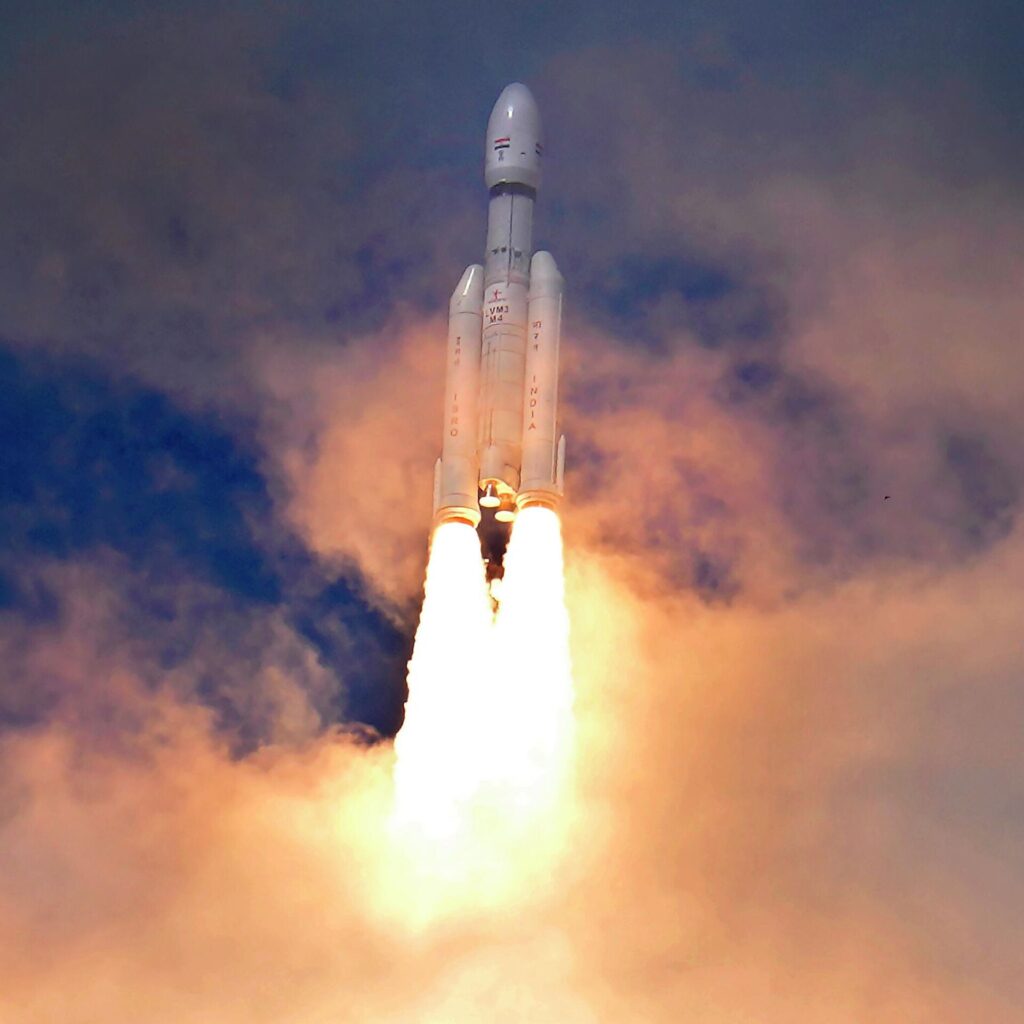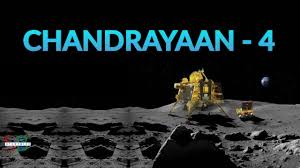Chandrayaan Four-An Astronomical Mile stone – 24
Chandrayaan Four
The Indian Space Research Organisation (ISRO) is focusing on the Chandrayaan Four mission as the next major venture in space research following the triumphant Chandrayaan-3 mission.
The goal of Chandrayaan Four is to return lunar samples to Earth, in contrast to its predecessors.
The Space Applications Centre (SAC/ISRO) Director, Nilesh Desai, emphasised the Chandrayaan-4 project as a noteworthy development in a recent speech to the Indian Tropical Meteorology Institute. Gathering samples from the lunar surface will be a part of the mission.
After arriving at the moon, the spacecraft will gather samples and make a spaceship-to-space connection. And after that, the module will go back into Earth orbit.
One of the two modules will return to Earth while the other will continue to orbit the planet as they get closer to it.
“Hopefully, in the next five to seven years, we will meet the challenge of bringing samples from the moon,” stated Desai, characterising the project as ambitious.
We are developing a list of items that the Chandrayaan-4 spacecraft ought to have. “What Chandrayaan-4 should carry (as the payload) is the first question we are posing,” Somanath stated.
He noted that a different approach was being considered and stated, “We originally agreed that a sample of the Moon’s soil should be returned to Earth for Chandrayaan-4 at the very least. Robots are what we want to use for this. Thus, this is the internal conversation that is taking place.

Follow Our Digiknowledge.co.in Page for Latest update about Bikes, Cars, Sports, , Life style and many more.
The goal of Chandrayaan-4 will be identical to that of Chandrayaan-3, but the approach will be different. Determining whether water exists on the lunar surface is still the aim. The soil sample will be returned to Earth via Chandrayaan Four
Despite the fact that Chandrayaan-3 studied soil samples on the moon, its scope was constrained by the rover’s scant testing equipment, according to Dr. Naimuddin.
We are all engaged in this conversation about how to complete this task using the rockets that are currently available. It’s no secret that returning a sample from the moon requires a great deal of complexity. Staying away (as in the case of the Chandrayaan-3 mission).
That is twice as much labour as the last time we did, as another rocket must launch from the Moon, return to Earth, and land on Earth,” Somanath remarked.
“Therefore, current rockets are not entirely competent. Consequently, we are experimenting with a novel design as a result of this; I won’t reveal it to you just now because it will be confidential “…
Because of the lack of exploration of the Moon’s south pole, the Chandrayaan missions are extremely significant.
The south pole is where there is the most chance of discovering signs of life or oxygen on the lunar surface, Professor Naimuddin emphasised.
Scientists would create cutting-edge technologies for the Chandrayaan Four expedition, according to the Department of Space Secretary.
Our mission will be accomplished using advanced technology that we are currently creating.
After the government gives its approval, we will return shortly. We must inform the government of the best approach (for completing the task), the amount of money needed, and the need for their approval.
What is Chandrayaan Four?
The Japan Aerospace Exploration Agency (JAXA) and the Indian Space Research Organisation (ISRO) are collaborating on the lunar sample-return mission Chandrayaan-4. The Lunar Polar Exploration expedition (LUPEX) is another name for the expedition.
What will the Chandrayaan Four mission do?
Samples from the lunar surface are anticipated to be collected as part of the mission. In order to collect samples from the moon’s surface, the mission, Chandrayaan Four will also send a lander and a “ascender”.
When is the mission Chandrayaan Four scheduled to launch?
Launch of the mission is planned for no early than 2026. The next mission, Chandrayaan-4, is scheduled to launch in 2028, according to Dr. Nilesh Desai of ISRO’s Space Applications Centre (SAC),




